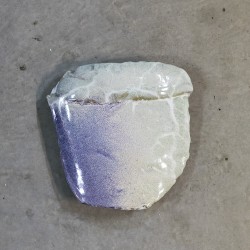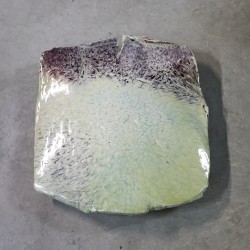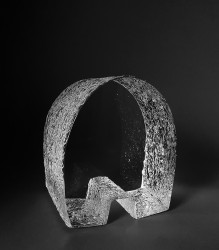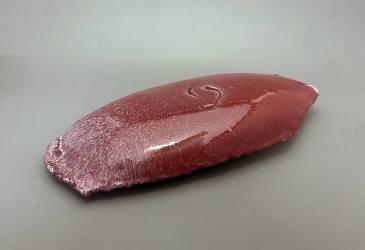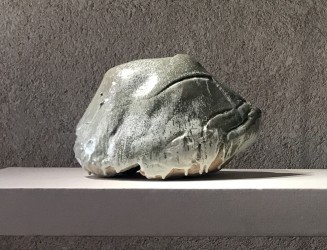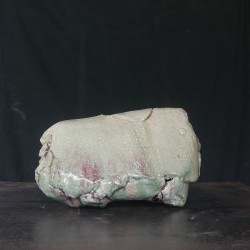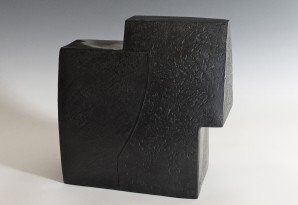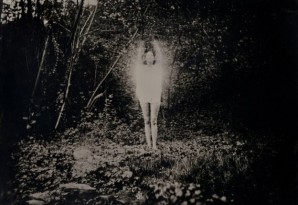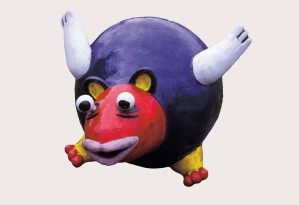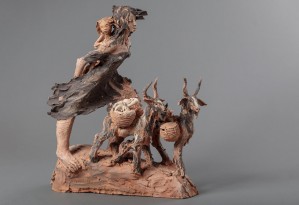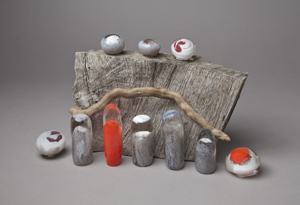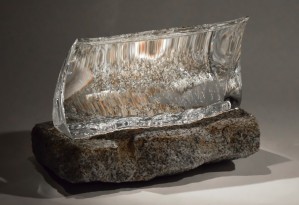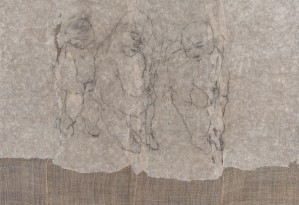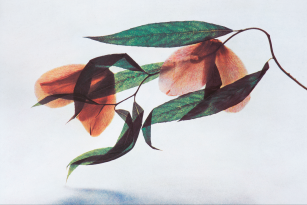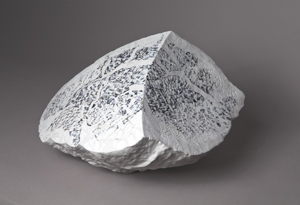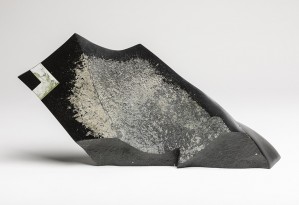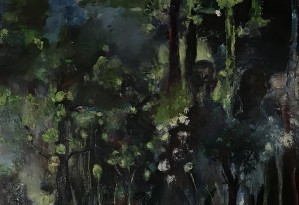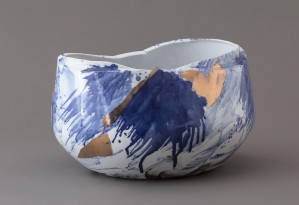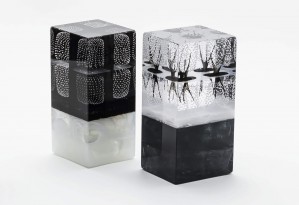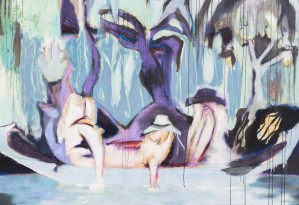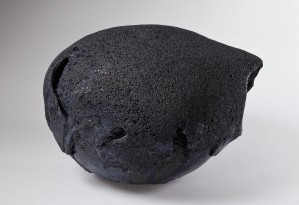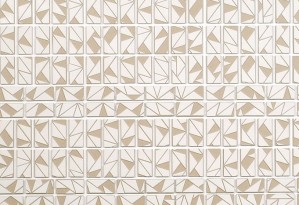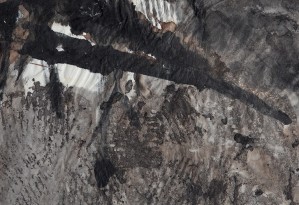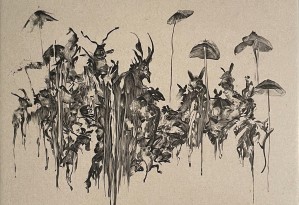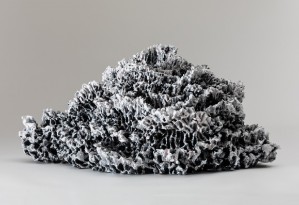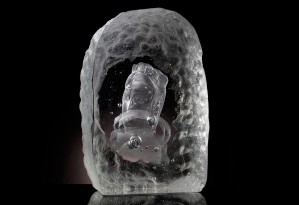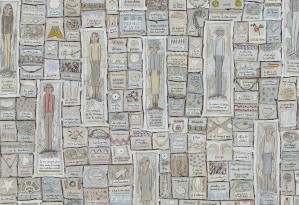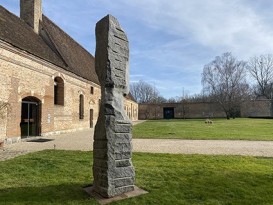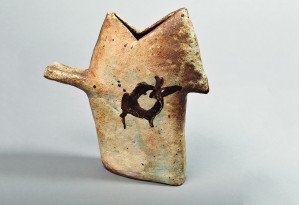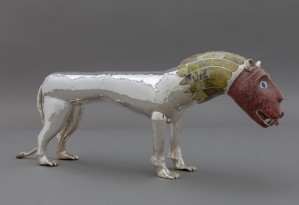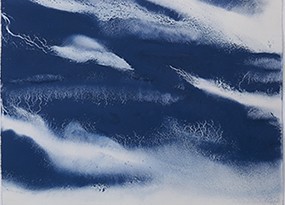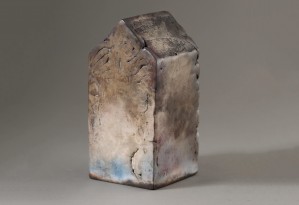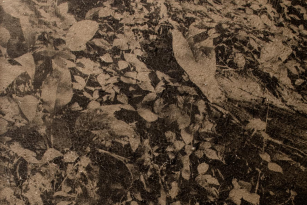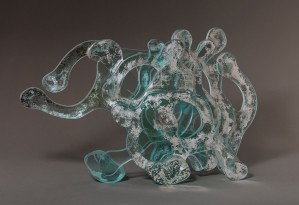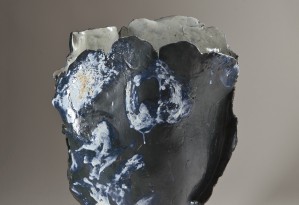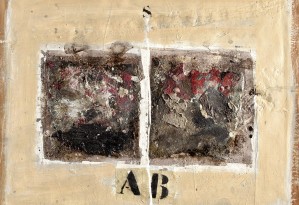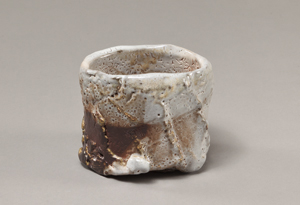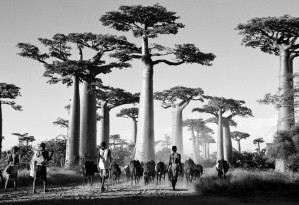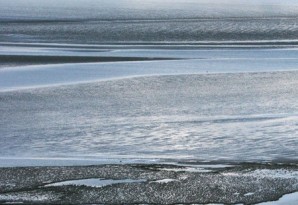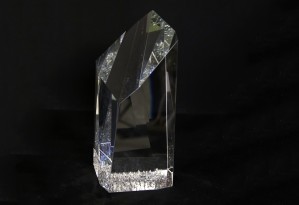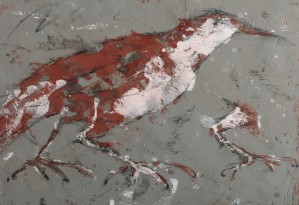DEJONGHE Bernard, sculpture, permanent artist of Galerie Capazza since 2003
"Bernard Dejonghe is not a ‘coffee table’ artist, in the sense that his work is neither anecdotal nor pretty.Bernard Dejonghe thinks in the grand manner. The visual aspect of his thoughts can be seen here in big slabs of voluptuous glazed ceramics and bold geometrical volumes of crystal clear glass both embodying, through a very personal vision of earth and sky, the essence of the universe.
The root of the art of Bernard Dejonghe is to be found in the sands of an immaculate African desert and in the stars of an unspoilt and inaccessible sky, both linked by the internal vision of ancient civilisations which, like unconscious and obsessive memories, seem to haunt his mind...
...The inspiration of Bernard Dejonghe is not only the result of mere dreams or personal obsessions, but of real physical research with scientists of the Musée d’Histoire Naturelle in Paris. With them he explored the remotest parts of the Sudan looking for prehistoric human settlements and the materialisation of celestial phenomena like the incredible fulgurites, natural desert glass produced by the shock of lightning on the sand. Those fulgurites in which sky and earth fuse so violently are, to my sense, one of the keys to the art of Bernard Dejonghe, and probably an indication of where his future work will lead him: to a total blend of ceramic and glass, two paths which, up to now, he has explored separately."
Pierre Ennès, Head Curator, National Museum of Ceramic, Sèvres, for the catalogue of Dejonghe's 2004 exhibition at Galerie Besson
Biography
Bernard Dejonghe was born in 1942 in Chantilly. After classic studies, he attends the class of the School of Art professions in Paris from 1960 till 1965.
From 1968 and during eight years, he settles down to Fontenay-aux-Roses, in Emile Decoeur's former studio. Emile Decoeur was a ceramist master of the beginning of the century. There he approaches the work on high temperatures, considering materials as supports with reflection rather than ways of manufacturing of objects.
It is at that time that he meets Ginette Monod, stemming from glassworkers' family, who becomes his partner. They will settle down to Briançonnet, above Nice, in 1976. In this new studio, Bernard will create ceramic works of big size for architecture. In 1979, he exhibits “Thirty states of a Red” about the death of an oven, the last cooking realized before the demolition of the oven of Decoeur. An alignment of quadrangular plates covered with red enamel is presented in Daniel Sarver's gallery, in Paris.
The approach of Bernard Dejonghe, since 1970, is a search on materials, clay, glass, which metamorphose under the influence of the fire, over time and the silence. He breaks the usual rules of their manipulations, the codes of their visions. He looks for densities, for relations in spaces. In 1980, the exhibition “Frozen Clay and others” in Gérard Rignaud's gallery, in Nice, shows the experiments of the fast coolings operated by the snow on the blocks of porcelain.
He presents in 1984 an installation of hundred blue squares hanging on the light and contrasting with raw lands in the space of the exhibition “Material - Signs - Silence” at Modern Museum Art of Villeneuve d' Ascq. In 1986 his exhibition in the Romanic rooms of the convent Saint-Trophime in Arles, shows forty nine blue steles contrived in square, and, on this occasion he creates his first massive glass works influenced by his meeting with the American glassworker Howard Ben Tré. “Vertical blue” is also installed on Arpille, mountain which dominates the studio, the time to shoot a movie.
His research work turns to the control of the complex technologies bound to the massive glass and to its possibilities of expressions. He is then close to a scientific approach by his experimental look towards the mineral world and its chaotic variations. During the decade of the 1980s, he participates in all the big exhibitions concerning the ceramic and the glass. In 1991, Bernard Dejonghe creates his first still grindstones, series of white ceramic in the silent sobriety. The forms of sculptures are close to the sign, simple, timeless: lines, circles, columns, triangles … We can see the influence of the various movements there of this period as Support/Surfaces, the minimalism, the Land art … In 1992 Bernard Dejonghe installs a triangular glass column to Clues of Guy and in 1994 a glass antenna and a seven meter concrete on the valley of Caussoles. The same year, he finds itself beside Howard Ben Tré during an exhibition at the Museum of Modern and contemporary Art of Nice.
Since 1989, Bernard Dejonghe paces up and down deserts: Mauritania, Algeria, Egypt, Chad, Sudan, Niger. He looks for archaeological tracks of primitive life, rupestral inscriptions or still cosmic glass there. He gets fresh ideas there. Earth and glass complement each other to speak about the same thing, the mineral universe which surrounds us.
We find the tracks of these journeys in the big personal exhibitions of the artist which stood out the decade 1990, to the Museum of the Decorative arts of Paris, to the Museum of the Former Bishop's palace of Evreux, to the Museum Bellerive of Zurich, to the Museum Ariana of Geneva, to the Museum of contemporary art of Dunkirk, to the Château d’eau of Bourges …
In the late 1990s, the glass pieces are purer, without crystallization, further evoking the cosmos, the origin of the world. Bernard Dejonghe is working on new copper reds, deep blacks. The color is treated as a material. The “formes brèves” appeared in 2004. They repeat, all the same, all different, as the series initiated thirty years before. In 2007, they are hung in front of the altar of the Chapel of Mercy, in Vallauris.
He was awarded many international prizes, the last was to be nommed Master of Art by the Ministry of Culture in 2006, his works are parts of many international public collections.
Read moreAwards
1994 World Glass Now, Hokkaido Museum of Modern Art, Asahi Shimbun Prize
Public Collections
Musée Réattu, Arles, France
Musée de l’Ancien Evêché, Evreux, France
Musée d’Art contemporain, Nice, France
Musée des Arts décoratifs, Paris, France
Musée du Verre, Sars Potteries, France
Musée national de la Céramique, Sèvres, France
Musée du verre, Conches, France
French great sights network
Kunstsammlungen Veste Coburg, Coburg, Germany
International Ceramics museum, Faenza, Italy
Design Museum, Turino, Italy
Musée des Arts Décoratifs, Lausanne, Swizerland
Victoria and Albert Museum, Londres, Great Britain
Benaki Museum, Athènes, Greece
Corning Museum, New York, USA
Kurokabe Museum, Nagahama City, Japan
Hokkaido Museum of Modern Art, Sapporo, Jaaon
Musée international de la Céramique, Inchéon, Korea
Read moreSelected exhibitions
2016 Galerie Depardieu, Fusion, Nice, France
2015 Stones secrets*, Musée d’anthropologie préhistorique, Monaco
Twentieth anniversary of the Galerie Empreinte*, Galerie Empreinte, Aydat, France
2014 Galerie Erskine-Hall, Londres, Great Britain
Peppermester Gallery, Dublin, Ireland
2013 Musée Ariana 8 Artists and clay*, Geneva, Switzerland
Galerie Yolenn White, Geneva, Switzerland
Galerie Erskine -Hall and coe*, Londres, United Kingdom
2012 Contemporary Ceramic Center, “Red clays, black clays, light glass“*, La Borne, France
Prieuré de St Cosme "Stones breath", Tours, France
2011 Galerie B, Baden Baden, Germany
Galerie Besson - Collect*, London, Germany
Galerie Varnier, Paris, France
Galerie Capazza, Nançay, France
Listen to the world - Musée archéologique of Bibracte, France
Musée de Biot, France
2010 Galerie B, Baden Baden, Germany
Galerie Besson, collect, London, Great Britain
Galerie Varnier, Paris, France
Galerie Capazza *, Nancay, France
Cité de la céramique, ceramics circuits, Sèvres, France
2009 Musée de Hyères, chapelle des templiers*, Hyères, France
World Contemporary Ceramic*, Inchon Museum, Korea
Musée de Sarreguemines, Rouges*, Sarreguemines, France
La Chaufferie, Black fusions, red fusions, Strasbourg, France
2008 Musée du Verre de Conches*, France
2007 Chapelle de la Miséricorde, Hors-Pistes*, Vallauris, France
Galerie Varnier, Paris, France
Galerie D Nick, Aubais, France
2006 Kunstforum, Kirchberg, Switzerland
Galerie Sintitulo, Mougins, France
Galerie De Witte Voet, Amsterdam, Netherlands
Galerie B, Baden Baden, Germany
2005 World Céramic Center, IAC Members Exhibition*, Inchéon, Korea
Galerie Varnier, Paris, France
Galerie Capazza, Nançay *, France
2004 Instituto Veneto di Scienze ed Arti, Vetri del Mondo *, Venise, Italy
Musée de Sèvres, Et la Terre Voyage…*, Paris, France
Galerie Sarver, Paris, France
Galerie du conseil général, Aix-en-Provence, Le Verre*, France
Galerie Besson*, Londres, Great Britain
2003 Masterpieces, Turin, Italy
2002 Galerie B15, Munich, Germany
2001 Global Art Glass*, Borgholm Castle, Sweden
Ceramic AIC *, Athens, Greece
2000 Inchéon Museum, Korea*
World Contemporary Ceramic*
1999 Siliciums, light clouds*, Bourges, France
1998 Etela Karjalan Taide Museo, Lappeenrenta, Finland
Galerie Besson, Londres, Great Britain
Hokkaido Museum of Modern Art, Glass Skin*, Japan
Galerie B, Baden Baden, Germany
1997 Musée d’Art contemporain, Fusions*, Dunkerque, France
1996 Venezia Aperto Vetro*, Venise, Italy
1995 Paris, musée des Arts décoratifs, Carte blanche to Bernard Dejonghe*, France
Musée Bellerive, Ombre du Blanc, Zurich, Switzerland
Musée Ariana*, Geneva, Switzerland
Galerie Besson, Londres, Great Britain
1994 Nice, Musée d’Art Contemporain, Sculptures de verre*,
Hokkaido Museum of Modern Art, Japan,
World Glass Now*
1984 Arles, cloître Saint-Trophime, Vertical blue*, France
1979 Villeneuve-d’Ascq, musée d’Art moderne, Matters, signs, silence *
* Collective exhibitions
Read more